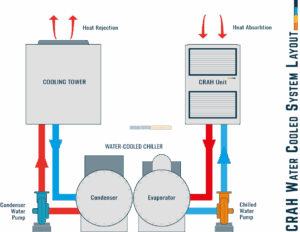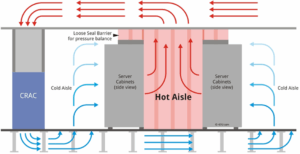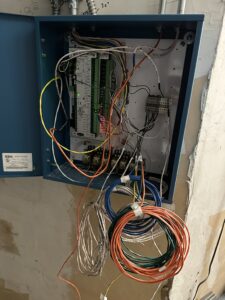Is my existing Electrical Service Panel big enough for my new addition?
Determining Existing Loads – How to determine and maximize existing service capacity for a proposed addition or remodel project.
When considering a room addition, adding Central Air Conditioning or a pool or any other significant load addition to an existing dwelling, the first thought is “Can my existing electrical service handle the increased load?” Thankfully the most frequent answer is YES, but in order to confirm it, some investigation and analysis must occur to be in compliance with applicable code rules and requirements.
Electrical Service Panel
Most single-family homes have at least a 100A main service (minimum size as required by NEC 230.79). This size of service generally will support a home up to about 2000SF with little trouble. Homes today now include all kinds of new loads mostly dealing with electronics (i.e. big screen TV’s, Sound Systems, Video Games, etc.). The typical load calculation for a single-family home is based on a general load value of 3 watts per square foot which allows for all the general lighting and miscellaneous general-use receptacles throughout the home. Additional loads for cooking and laundry equipment, appliances, etc. must also be included per applicable NEC rules and methods. They all get added together and then various demand factors are applied to arrive at the net calculated service load in watts. This value is then divided by the service voltage (most typically 240V single-phase) to arrive at the minimum service ampacity requirement.
The NEC (National Electrical Code) is the industry standard for electrical installation requirements and addresses the issue of determining existing electrical loads for dwelling units via NEC Article 220.83. This section allows an alternate calculation that allows an additional demand on existing general loads (8kVA vs 10kVA) when evaluating an existing service for the suitability of adding new loads. This generally will accommodate most proposed load additions without a major service upgrade or modification.
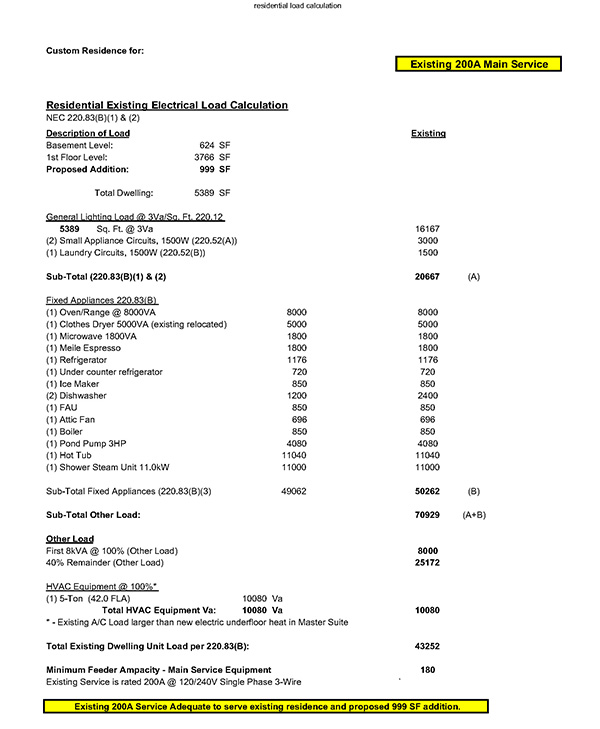
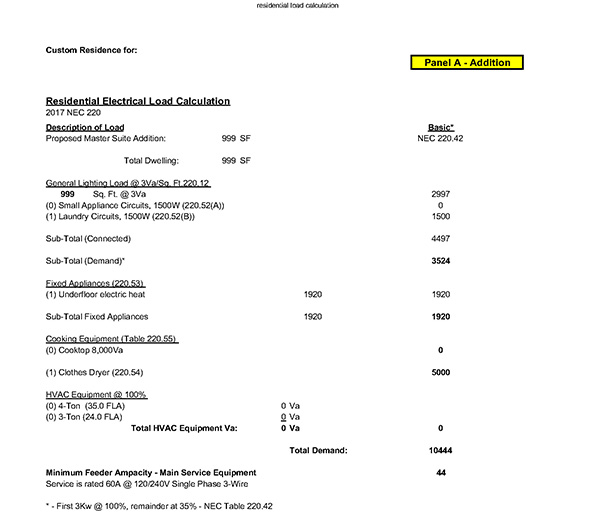
If the load analysis by this method does not allow sufficient capacity for the proposed load additions, a service upgrade may be advisable. Utility demand data may be used as well if available and it must be for a minimum 1-year period. Most single-phase residential utility meters do not provide historic utility demand data, but some utilities are able to provide this data if formally requested.
Another last-ditch effort would be to install an electronic demand meter and monitor the existing service to capture the existing load data for a minimum period of 30 days per NEC 220.87. The maximum demand recorded must be considered at 125% to determine the existing load per Code requirements. Any spare capacity remaining from the difference of the existing service rating in amperes minus the existing recorded peak demand at 125% in amperes is the allowable spare service capacity available for the proposed load additions.
Of course, it is recommended that before any modifications to the existing service or distribution equipment are made, it is advisable to have a licensed electrician evaluate the existing service equipment and wiring and render an opinion as to the suitability of the existing service and distribution equipment for the intended purpose. Sometimes the age and condition of an older service might prohibit any additions.
EVstudio has experienced electrical engineers and licensed master electricians on staff available to properly evaluate any existing service or proposed addition if so desired. If you have any questions, please feel free to contact us.


